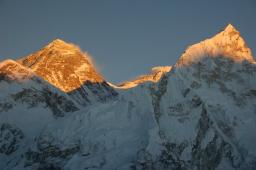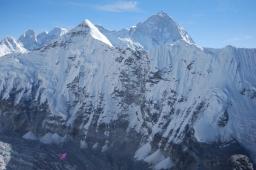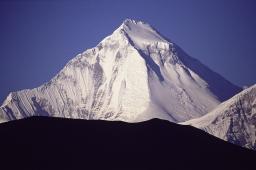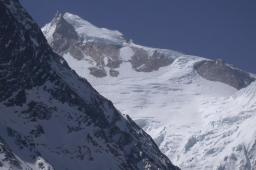Places of interest in Nepal
Each part of Nepal has its own, historical, geographical, cultural, traditional and religious significance, rich biodiversity and ethnic diversity. This aspect has made a visit to Nepal so much intriguing, exciting and wonderful. Almighty Himalayas of Nepal has held the entire world under its spell. Each year people in huge number come to Everest for Mountain expedition and trekking in Nepal . Nepal houses numerous unbelievably exotic locales. Cultural heritage like the royal palace with intricately carved doors and windows and beautiful courtyards adorned with exquisite icons, temples built with excellent artistic craftsmanship, art pieces designed in stone, metal, terracotta ivory etc has presented Nepal as an exquisite open museum before the world.
KATHMANDU
Kathmandu , capital of Nepal , accommodates 18 million people of various race, caste, creed, culture and religion and is the largest city in Nepal . The term ‘ Kathmandu ' has been derived from the combinations of two Sanskrit words, ‘Kaasth' meaning wood and ‘Mandap' meaning beautiful shade. Situated at the elevation of approximately 4,265 ft, Kathmandu has Patan and Bhaktapur as two other cities. Since 1960s, Kathmandu has been quite popular with western tourists. Thamel, situated at the heart of the city, is a tourist hub and a favourite hang out place for Nepali youths. 130 historic monuments, temples, monasteries, palaces and other cultural heritage of Kathmandu showcase the finest display of architectural masterpiece like intricately carved windows, intrinsic roof struts, statues of gods and goddesses, temples designed in pagoda style with erotic carvings and repoussé metal work facades. UNESCO World Heritage Sites has declared Durbar Squares of Hanuman Dhoka, Patan, Bhaktapur, the Buddhist stupas of Swayambhu and Boudhnath, and the Hindu temples of Pashupatinath and Changu Narayan and Lumbini as the eight cultural heritages of the Kathmandu Valley .
HANUMAN DHOKA
Centered in Kathmandu , Hanuman Dhoka as the name suggests bears religious significance. Hanuman Dhoka stands proudly in the vicinity of Degutale Temple , Taleju Mandir, Nasal Chowk, and nine storey Basantapur Tower , Panch Mukhi Hanuman Temple , Mul Chowk, Mohan Chowk, Sundari Chowk, Tribhuvan Museum , King Mahendra Memorial Museum and Kal Bhairab temple. Hindu Mythology boasts that if a person interprets 17th century stone inscriptions written in 15 different languages on the walls of the palace, there would be instant flooding of milk from the wall. Hanuman Dhoka was the former Royal Palace of the Malla kings and later was passed onto the Shah dynasty. Royal family lived in the Hanuman Dhoka palace till 1886 and thereafter shifted to Narayanhiti palace. However, the palace is still used for ritual and ceremonial occasions. A new King is crowned inside the palace. The palace has 17th century statue of Hanuman to the left of the palace entrance and amazing sculpture of Lord Narasimha. The palace bears the historical reminisce of Royal family, culture and religion of Nepal . Museums inside the palace lets one explore the culture, religion, custom, tradition, architecture, history of Royal palaces etc. An entrance fee has been set for entering into the museums. International tourists are charged Rs. 250 for the entrance. Museums remain open for 7 days in a week with the exception of Tuesday from 10.30 am to 3 pm in the winter and from 10.30 am to 4 pm in the summer. On Friday one must visit the museums from 10.30 am to 2 pm .
KASTHAMANDAP
Kasthamandap is also known as Maru Sattal and lies next to Kumari temple. It was built in the 14th century by King Laxmi Narshingh Malla from the wood of a single tree and therefore was named so.
NATIONAL MUSEUM
National museum, situated at Chhauni in Kathmandu , was established in 1938. It depicts the real picture of Nepal . Several artistic masterpieces, artifacts, sculptures, historical pictures of royal family and martyrs, ancient monuments etc are showcased in the museum. As one explores further, Nepal history comes alive giving clear understanding of Nepali culture and tradition.
BOUDDHANATH
Boudhanath epitomizes Tibetan Buddhism. It lies 8 kms East of Kathmandu and was built by Licchavis King Man Dev in the 5th century A. D. Its colossal and ancient stupa is regarded as one of the world's biggest stupa and has been built on a stepped octagonal base and inset with alcoves representing Buddha and his teachings. After Chinese invasion in 1959, Tibetans in thousands came to this famous Buddhist Chaitya and energized the stupa. The stupa is surrounded by various temples or 'gompas'. The atmosphere of the whole place lightens up with zest as fragrance of incense drifts through the air. Chanting of monks and creaking of prayer wheels can be heard while strolling around the base. It is one of the prime sites for pilgrims and tourists in the country.
PASHUPATINATH
As the name indicates, Pashupatinath temple is a temple of Lord Shiva and is the holiest place for Hindus. The sacred temple lies on the banks of sacred Bagmati River 5 kms east of Kathmandu city. Non-Hindus are strictly prohibited from entering the temple. It has two-tiered roof and four silver doors. Devotees from all over the world come here to pay their homage to lord Shiva.
SWAYAMBHUNATH
It is 3kms away from the West of Kathmandu. Ancient tale has it that thousands of years ago Swayambhunath was an island. Later a stupa was built. King Manadeva contributed in the making of the stupa in 460. After the invasions from Mughal it was distorted and had to undergo renovation in the 14th century. King Pratap Malla in 17th century further enhanced the architecture and also added a stairway to get to the stupa. At present, the stupa is a solid hemisphere of brick and clay, supporting a lofty conical spire capped by a pinnacle of copper gilt and has Lord Buddha's eyes adorned on all the four sides of the spire base. Buddhists regard it as the holiest place. Swayambhunath also offers a majestic view of the entire Kathmandu valley.
KUMARI TEMPLE
Kumari is the Living Virgin Goddess of Hindu religion. Kumari temple is situated inside the Basantapur Durbar built by King Jaya Prakash Malla near Hanuman Dhoka. Kumari is chosen from a Newari Shakya family after meeting up with all the criteria. She must not bear any body marks or injuries and when she reaches puberty, she is replaced by another Kumari. Non-Hindus are now allowed into the temple and photographing the temple is strictly prohibited.
BUDHANILKANTHA
From 8 kms north of Kathmandu at the base of Shivapuri hill lies Budhanilkantha. It is mostly popular for Lord Vishnu's temple and Shivapuri hill. The Lord Vishnu temple has a magnificent statue of Lord Vishnu in lying position in the middle of a small pond rested on a bed of snakes. It is a world renowned site of Hindu pilgrimage. Shivapuri hill is famous for trekking, camping and holidaying.
CHANGUNARAYAN
Two-tiered Changunarayan temple is 15 kilometers away from Kathmandu city. Since this is the temple of Lord Vishnu , also called Narayan and is situated near Changu, the temple has been named so. Stone inscription of 464 A.D and other architectural master piece featured in the temple showcase ancient history of Nepal . The temple also bores the sculptures of Vishnu's ten incarnations; Vishwaroop, Vishnu Vikranta, Vishnu riding Garuda, Nar-Singha Vishnu etc. Temples of Kileswar Shiva, Chinnamasta Devi and other gods and goddesses are also present in the vicinity of Changunarayan temple. The temple provides an awesome view of Manohara River cascading through lush vegetation.
NAGARKOT
Situated at an altitude of 2175 m. to the east of Kathmandu , Nagarkot stands proud as one of the most popular tourist destinations in Nepal . It offers incredible panoramic Himalayan views like Mt. Everest , Manaslu, Gauri Shankar and many others. It also promises the most magnificent unparalled sunrise view. Its favorable climatic condition makes it the very ideal getaway for holidaying and honeymooning. It has best resorts, cafeteria and restaurants.
DHULIKHEL
Dhulikhel is bound to Kathmandu from the East by a distance of 30 kms. Traditional heritage, unique cultural setting and breathtaking views of the snowy Himalaya makes Dhulikhel one of the favorite tourist destinations in Nepal . Nothing can be more fun and adventurous than taking short treks on its routes.
JAWLAKHEL
It is a fascinating place where one can see traditional Tibetan crafts of spinning, dying and weaving carpets. There are several handicrafts shops featuring Nepali traditional items in Jawalakhel. Most of the international non-government organizations are situated in Jawlakhel. Residential areas around the location give a picture of Nepali urban society. It has high quality restaurants and hotels.
PATAN
Lying connected to the 5 kms south-east of Kathmandu Valley by Bagmati River, 459 hectares of Patan is bounded by 4 stupas built by Emperor Ashoka in the 3rd century BC as recorded in the history. Patan is also called Lalitpur. There are several legend attached to the origin of the term, Lalitpur. One such legend says that in the ancient time Kathmandu was engulfed with severe drought and three people were assigned to summon God Red Machhendranath from Kamaru Kamachhya, a place in Assam , India , into the valley for rainfalls. Among the three people one was a farmer named Lalit who believed to have contributed more.
When rain finally poured into the valley, people as a sign of gratitude sanskritized the valley after his name and the term ‘pur' meaning township and was finally named as Lalitpur. Another tale boasts that the valley was named after king Yalamber. Patan people refer to Patan as Yala. History has it that Patan was founded in the 3rd century by the Kirat dynasty and later was modeled into perfection by Lichhavis in the sixth century followed by Malla dynasty. At present Lalitpur sub metropolitan city has been categorized into 22 wards. This city presents a potpourri of finest traditional crafts and rich artistic heritage. Patan Durbar Square, Mahaboudha Temple, Kumbeshwor temple, Krishna Temple, Golden Temple or Hiranya Varna Mahavihar, Mulchowk, Jagat Narayan Temple, Big Bell, Pillar of Yognarendra Malla, Hari Shanker temple, Vishwanath temple, Bhimsen temple, Marga Hiti, Mani Mandap, Café Pagoda, Rato Machhendra Temple, Minnath, Rudra Varna Mahavihar etc are the major attractions of Patan.
BHAKTAPUR
Bhaktapur lies on the Eastern part of Kathmandu valley. Also known as Bhadgaon or Khwopa, Bhaktapur is regarded as the abode of ancient Nepali culture, custom and alluring arts pieces of excellent craftsmanship. Each historical monument represents medieval culture, religious and custom of Nepal . Newari populace has largely dominated Bhaktapur. Bhaktapur is the only place in Nepal which has remained untouched by western culture. Lion Gate, Golden Gate , Art Gallery , Statue of King Bhupatindra, Nyatapola Temple and fifty-five windowed Malla palace are the living prides of Bhaktapur. The place houses finest restaurants and hotel to cater to the needs and requirements of tourists. For entering into Bhaktapur Durbar Square , foreign tourists have to formost pay $10 as an entry fee and only Rs 50 for nationals from SAARC-countries and China .
LUMBINI
Lumbini lies in the southern Terai plains of Nepal and is about 300 kilometers Southwest of Kathmandu. It is the birthplace of Siddhartha Gautam Buddha and is therefore regarded as a sacred pilgrimage site for Buddhists. In 250 BC, Emperor Ashoka built a large stone pillar containing an inscription about the birth of the Buddha. Lumbini bears not only historical and religious significance but also cultural significance. Lumbini Garden , Maya Devi Temple , Tara Foundation, World Peace Pagoda, China Temple , Thai Monastery, Burmese ( Myanmar ) Temple , Nepal Buddha Temple and Dharmaswami Buddhist monastery are the major attractions of Lumbini. There is a museum and a research center for Buddhism. It is also considered an ideal birding destination as it houses variety of rare bird species. Many high quality hotels, restaurants and lodges are available in Lumbini.
JOMSOM
You can either walk or fly to Jomsom. Either way promises you a dramatic fun-filled journey. You can reach Jomsom by crossing the challenging Thorong La on the Annapurna Circuit or by trekking up the extraordinary Kali Gandaki from Pokhara. Pokhara-Jomsom flight gives you the most thrilling panoramic view of Himalaya and rivers. Its other attracting factor is Muktinath, its sacred site. Travelling to Jomsom will take you down to the memory lane of ancient kingdom of Mustang .
POKHARA
Pokhara is 200 kms away from Kathmandu and is a major holiday destination for both domestic and international tourists. It is most popular for its lakes Phewa, Begnas and Rupa. Exploring the deep-seated mysteries of intriguing caves like Mahendra Gupha will further heighten your spirit of adventure. The Devil's Fall and the gorge of the Seti River are the other dotted places for sightseeing. After entering Pokhara you will be totally captivated by true ambience of nature and its exquisite beauty.
CHITWAN
Royal Chitwan National Park has stretched across an area of 932 sq. kilometers and lies in the inner Terai belt of Chitwan. The park offers a very worthwhile excursion through jungle safari. With nature at its best you will come across the rarest species of eco-system. Canoeing through the lake of the park will have you encounter with crocodiles and more fun-filled adventure. During your stay in one of the resorts of the park, you will be guided on a cultural tour to the lifestyles of Chitwan people. In the evening and at night you can indulge in most exotic events of your choice.
SAGARMATHA NATIONAL PARK
Sagarmatha National Park situated at the foothills of Himalayas has occupied an area of 1,148 sq. kilometers. It offers the most magnificent views of rugged mountains, glaciers, valleys and river. The park houses an amazing array of plant species, birdlife and exotic animals. Plant species like blue pine, silver fir, rhododendrons, birch etc have glorified the beauty of the park. On venturing into the park, one may encounter rare species like snow leopard, pandas, lynx etc. Birdwatchers can have the best sightseeing experience while viewing rare bird species like snow cock, pheasant, snow pigeon etc. In a nutshell, Sagarmatha National Park is a storehouse of Himalayan natural resources.

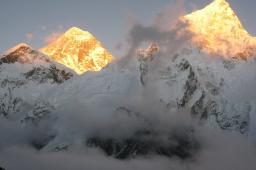


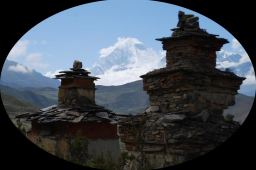
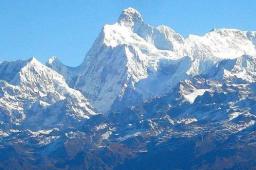

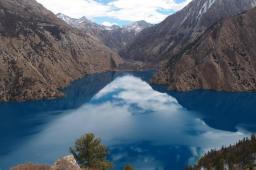

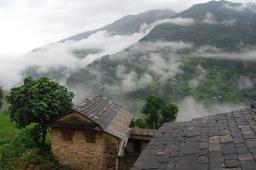


.jpg&w=256&h=170)
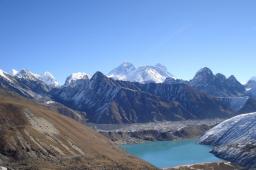

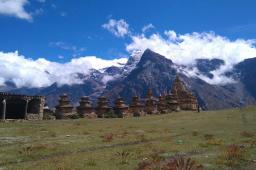


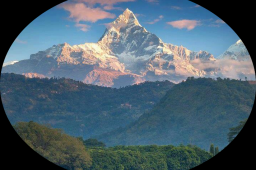
.jpg&w=256&h=170)


